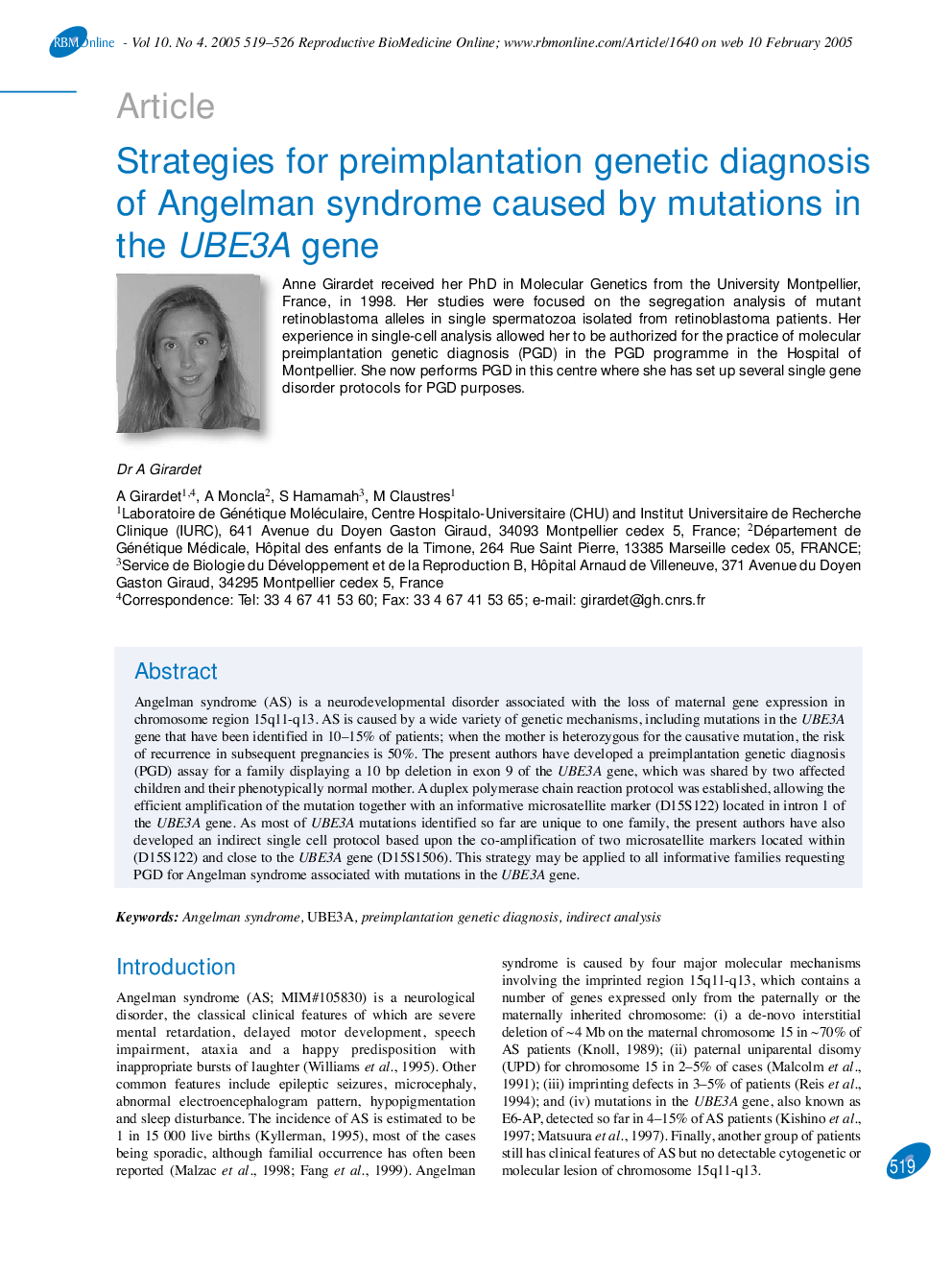| Article ID | Journal | Published Year | Pages | File Type |
|---|---|---|---|---|
| 9334733 | Reproductive BioMedicine Online | 2005 | 8 Pages |
Abstract
Angelman syndrome (AS) is a neurodevelopmental disorder associated with the loss of maternal gene expression in chromosome region 15q11-q13. AS is caused by a wide variety of genetic mechanisms, including mutations in the UBE3A gene that have been identified in 10-15% of patients; when the mother is heterozygous for the causative mutation, the risk of recurrence in subsequent pregnancies is 50%. The present authors have developed a preimplantation genetic diagnosis (PGD) assay for a family displaying a 10 bp deletion in exon 9 of the UBE3A gene, which was shared by two affected children and their phenotypically normal mother. A duplex polymerase chain reaction protocol was established, allowing the efficient amplification of the mutation together with an informative microsatellite marker (D15S122) located in intron 1 of the UBE3A gene. As most of UBE3A mutations identified so far are unique to one family, the present authors have also developed an indirect single cell protocol based upon the co-amplification of two microsatellite markers located within (D15S122) and close to the UBE3A gene (D15S1506). This strategy may be applied to all informative families requesting PGD for Angelman syndrome associated with mutations in the UBE3A gene.
Related Topics
Health Sciences
Medicine and Dentistry
Obstetrics, Gynecology and Women's Health
Authors
A Girardet, A Moncla, S Hamamah, M Claustres,
